The Om Chair is meant to be the perfect meditation chair. Or at least, our interpretation of the perfect meditation chair. And the road to designing it was anything but a straight one. We thought it would be interesting for you, dear reader, to have some insight into how we arrived at our final design, and the steps we took along the way. Hopefully it’s a fun read, and can help you appreciate what we do as a company.
Our founder has decades of product design experience, and spent the decade before Stillside running a similar small, consumer-direct product company. However, the world of furniture is a whole new ballgame. The most significant challenge here is really just the size and scale of the products themselves. This presents challenges all along the supply chain, from materials sourcing, to molds and tooling, and especially shipping. Everything you want to make becomes more difficult, more time-consuming, and more expensive. And the world of COVID has compounded many of these challenges. But, we’re getting ahead of ourselves.
First, let’s talk about chair design. The critical areas to consider are the seating surface and the backrest. These are the contact points of the chair to your body, and the crux of our design. Our Om Chair’s design is brand new, with nothing even closely comparable on the market, which became the basis for our utility and design patents. Specifically, we want three things: first, a seat that curves upward, in order to support the knees and upper legs; second, a seat that is deep enough to accommodate the entire leg and foot while in the cross-legged “lotus” posture; and third, a supportive and ergonomically-shaped backrest, which will support a healthy and upright posture while allowing the user to remain comfortable for any period of time.
With those design constraints in mind, and after having taken a lot of body measurements from a wide variety of people, we came up with our first design. It looked something like this:

Looking at it in the abstract, it’s not terrible. It is an interesting shape, and while the aesthetics could use some work, we really just want to see how it functions. So we set off to build the first prototype. For early concept things like this, we don’t contract out to a factory. Not at this stage. This stage is a lot of in-house manual work with miter saws, band saws, belt sanders, drills, etc. The end result isn’t meant to really be seen by anyone in the real world. It’s just to give us an idea of how the product works in the real world. And this stage is always full of surprises. Most notably, in the real world this first pass ended up a lot bigger than we had imagined. Take a look:

So, the chair is huge, and much bigger than we had imagined when designing. It’s too big to conveniently fit in most people’s spaces and lifestyles. However, this first prototype actually taught us a lot of good lessons. It was extremely comfortable, and worked extraordinarily well as a meditation chair. Within the first five seconds, we knew this was the right direction. Ignoring the large footprint, this design was actually a big win and a great step forward. The seating surface, the backrest, the angles at play, were all excellent. And there is simply nothing like this on the market, anywhere.
So, we set about finding a way to refine the design, maintaining the geometry and functionality of the seat and backrest, while shrinking the footprint and making a more practical piece of furniture. To that end, we went through a number of design spins and ideas on what would work best. Here are just a few of the designs we developed and considered, but ultimately rejected, next to the original for size reference:
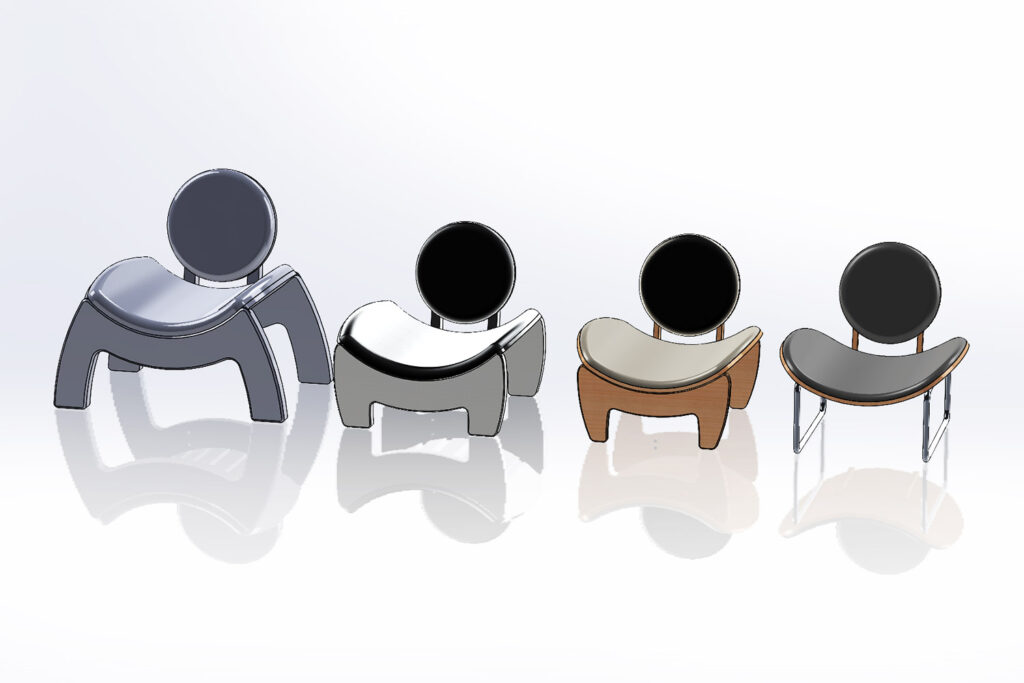
and even manufactured a fair number of them before finding just the right one.
About fifty different drafts were created. Along the way, we physically prototyped probably fifteen of them, learning a lot more about what it will entail to actually manufacture them, and what they are like from the consumer perspective. During this process, there were four big goals that came into focus.
First, it was critical to maintain the seating surface and backrest geometry as the original design. It works well, is unique in the market, and is essentially the soul of our product. No compromises here.
Second, the final chair needs to be light in weight. This is for a couple of reasons. For one thing, it just makes life so much easier for the customer, who can move the chair around, get it easily delivered to a fifth-floor walkup, etc. And just as importantly, we want to keep prices as reasonable as possible; as a direct-to-consumer company, the cost of shipping will be a critical factor. We can’t depend on bulk freight to your local big box store. We need a product that is easy to ship.
Third, and related to the point above, we want a flat-pack design. A massive box is going to be impracticable for a number of points along the supply chain, so we need something that can break down into small, discrete units.
Fourth, we want this to be a chair that can assemble with a minimum of steps and a minimum of tools. Although we have all experienced the joy of completing a complex assembly project, that’s not something we want to burden our customers with. This product is about helping ease your mental stress, not causing it. So we wanted to achieve a design that could be assembled by anyone in just a couple minutes.
After a whole lot of struggle, research into a whole lot of different materials and construction methods, we finally arrived at a very simple, stripped-down design. It is perhaps the most elegant expression of the fundamental idea, and adheres to my preferred design philosophy (usually attributed to Antoine de Saint-Exupery) that a design is finished not when there is nothing left to add, but nothing left to take away. So what you see below is our final design sketch of the Om Chair, before further revisions made necessary by the manufacturing process. This gives us an idea of where we will go heading into production.
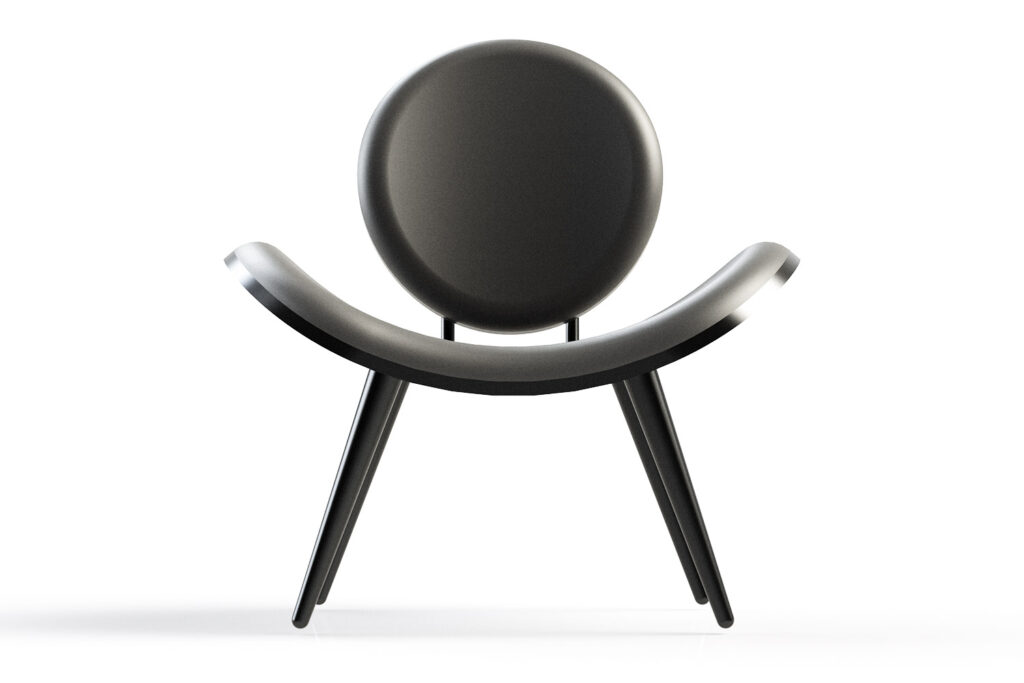
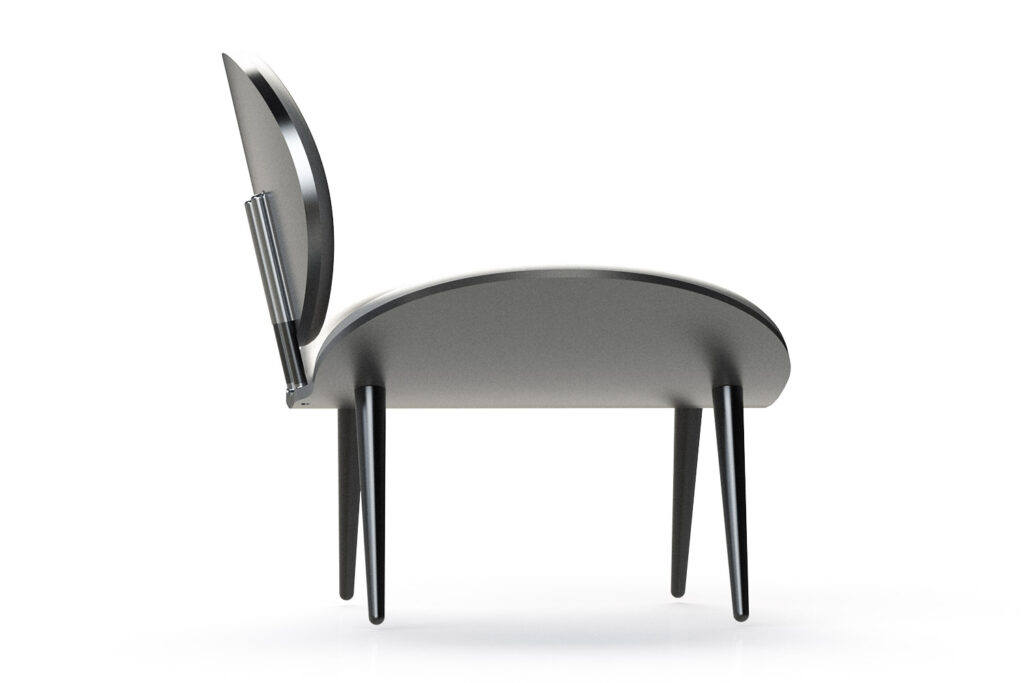
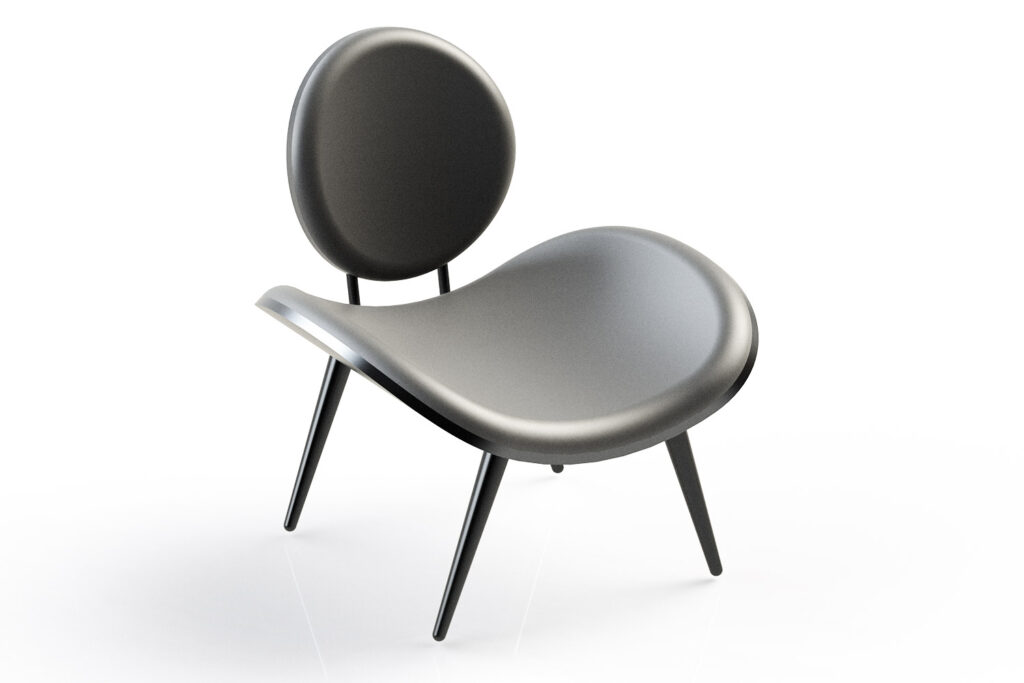
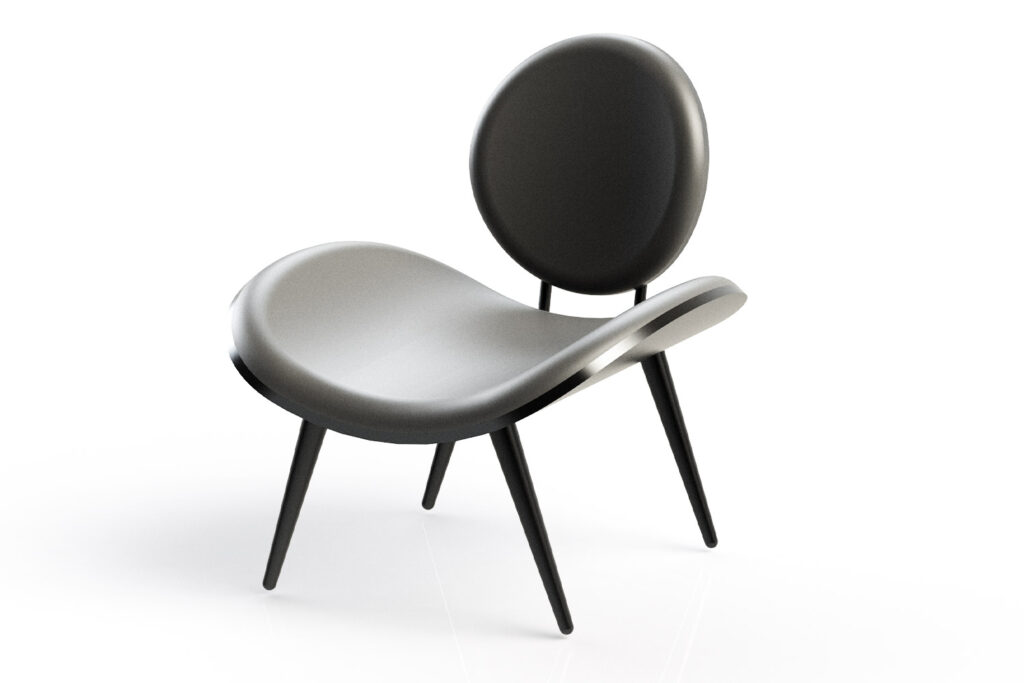
The seating surface is one integrated structure, no more slats or cross-beams. Same goes for the backrest. Under the seat, four slender legs evoke a modern but timeless design aesthetic, to fit with every kind of décor. The backrest got an upgrade, and now features curvature identical to that of the seating area, for an even more comfortable, snug seating experience. While the chair was designed for meditation, it can really be enjoyed for practically any seated activity. It’s like the furniture equivalent of your favorite blanket. Oh, and on the topic of assembly, this thing is deadly simple. Out of the box, you just screw in the four legs, by hand. Then screw in the two back rods, by hand. Slide on the backrest, by hand. And you’re done; have a seat! In about one minute, and with zero tools used, you’ve built the chair.
This is the design we are moving forward to production, and we can’t wait to show you when we have more info! Thanks for reading!
-Stillside
